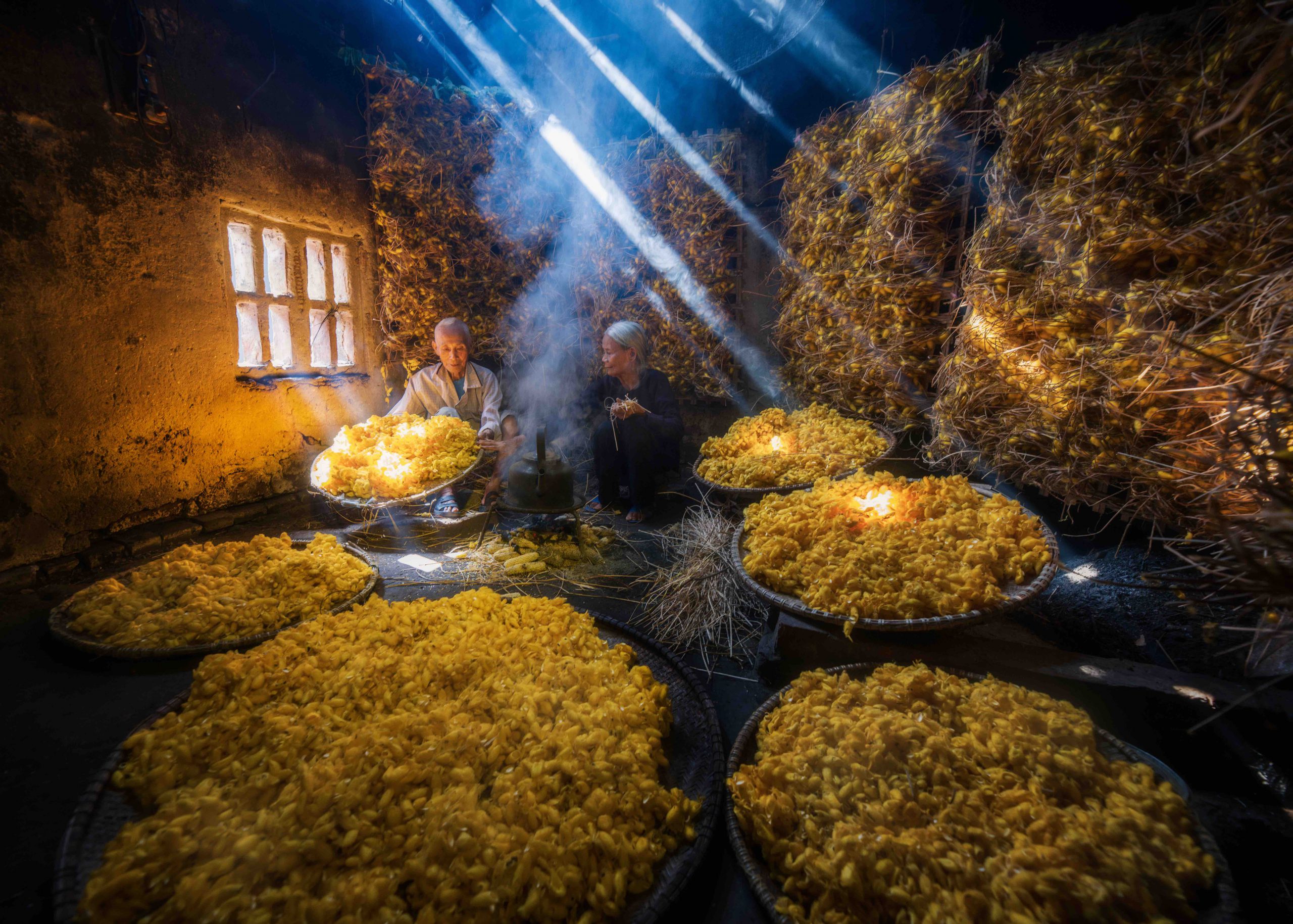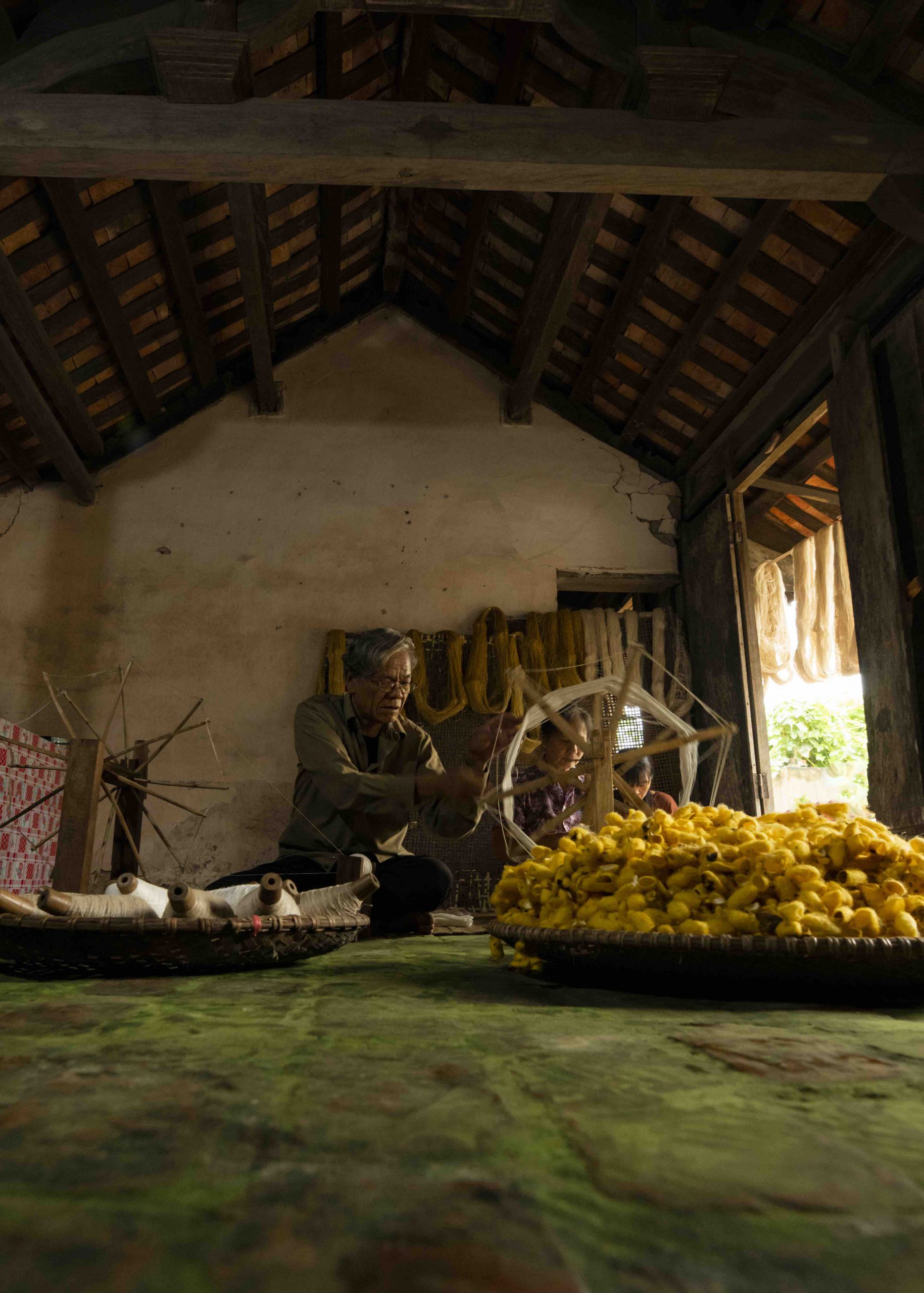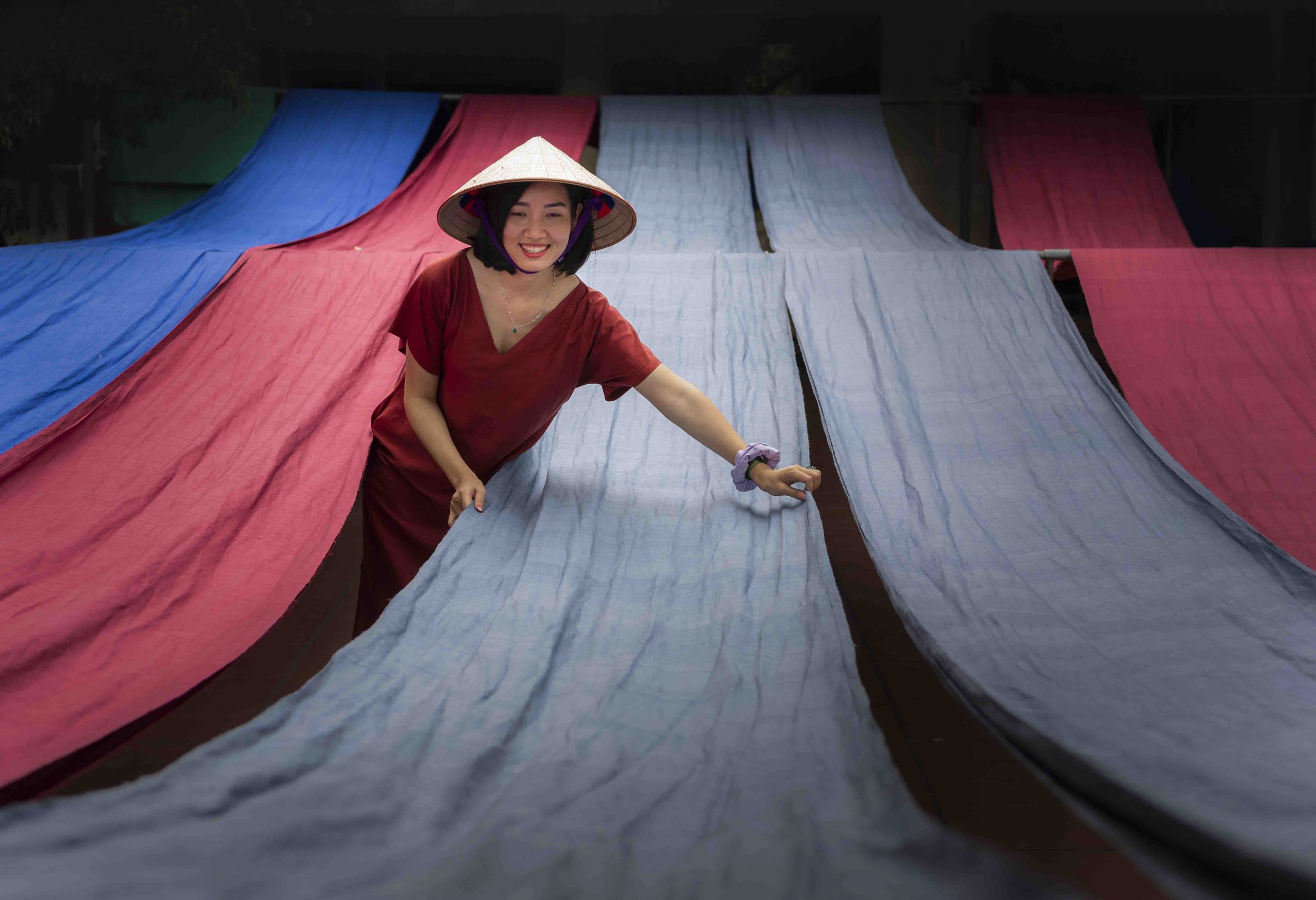An Nhien
On a crisp autumn day, after crossing lush green rice fields that stretched as far as the eye can see, we arrived in a mulberry-growing, silkworm-rearing, and traditional silk-weaving village in Thai Binh province. At each stop, mulberry fields, silk cocoons, weaving looms, and simple yet passionate farmers drew us into a journey of discovering the “hidden treasures” humbly nestled in the fertile Red River Delta.

Silver and gold
Located by the Red River, Hong Phong commune in Vu Thu district is blessed with fertile alluvial soil perfect for growing mulberry trees. This region produces the clean raw materials needed to raise healthy silkworms. The commune currently boasts approximately 257 hectares of mulberry trees, with nearly 1,200 households engaged in silkworm farming. This traditional craft has been passed down for decades, and the locals are deeply committed to preserving and promoting it for future generations.
According to Mr. Le Manh Truong, the Hong Phong People’s Committee chairman, mulberry cultivation and silkworm rearing were introduced to this commune in the early 1960s. After facing various challenges, the industry has seen significant revitalization since 2010, thanks to investment in new scientific techniques and the adoption of new technologies. These advancements have created a closed-loop system that enhances productivity and increases the value of raw materials. Locals have grown increasingly committed to this craft, as it can earn ten times more than growing rice and supports families’ stable incomes.
Silkworm farming provides work for people of all ages, as production processes can be divided into smaller tasks. Even those beyond the normal working age can earn an income. Upon entering the village, it’s common to see students cutting mulberry leaves and spreading them for the silkworms and elderly people leisurely separating cocoons in a yard. Raising silkworms is not overly strenuous but requires a significant workforce to care for the silkworms from the moment they hatch through their growth and cocooning, and to ensure the silk is dried to a perfect sheen. There is work to be done from dawn until late at night.

Silkworms are sensitive to weather and humidity. Today, they are raised in climate-controlled rooms equipped with dehumidifiers to maintain a stable environment. Each family typically takes on a specific task: one household may incubate eggs and rear young silkworms for breeding, a neighboring house raises larger silkworms for golden cocoons, and another focuses on silkworms for white cocoons. Thanks to cold room technology, the white cocoon silkworms that could previously only be raised in the winter and spring can now be cultivated year-round, yielding better productivity and higher economic returns than golden cocoons. However, the locals still raise both varieties to meet market demands.
With growing demand for natural raw materials and products derived from mulberry and silkworms, this market remains stable. Each household typically manages around eight to ten trays of silkworms, producing three batches per month, resulting in annual incomes reaching hundreds of millions of VND. Families who “eat standing up”, meticulously caring for their golden and white cocoons day and night, can produce “gold and silver”, bringing prosperity to Hong Phong.
The soul of raw silk
Leaving Hong Phong commune, we traveled to the 400-year-old weaving village of Nam Cao in Kien Xuong district. This village is renowned for its unique technique of spinning raw silk thread – locally known as “dui” – by hand in a way practiced nowhere else in Vietnam or the world. In 2023, the Ministry of Culture, Sports, and Tourism officially recognized this village as a National Intangible Cultural Heritage for its “Raw Silk Weaving Craft”.
Our first stop was the home of artisan Nguyen Dinh Dai, who is over 60 years old and hails from Cao Dat Doai hamlet. He is the fourth generation in his family to carry on the ancient craft of raw silk weaving in Nam Cao. Mr. Dai explained that the villagers still spin silk threads by hand using a method that has yet to be replaced by any machinery worldwide. This technique allows them to utilize even broken cocoons, spinning and twisting the fibers to create raw silk threads. Nam Cao’s raw silk is made from clean and beautiful cocoons. After the threads are spun, the silk undergoes 20 manual processes to achieve the desired softness and drape.

Mr. Dai’s father sought inspiration from neighboring weaving villages and invented a loom, developing a unique weaving technique in Nam Cao. This allowed villagers to move beyond merely supplying raw silk materials, as in the past. Over time, the looms have been upgraded to include motors, making them semi-automatic. This has improved productivity and made the weavers’ jobs less strenuous. In the past, silk from Nam Cao was exported to France and elsewhere in Europe. Today, it is sent to Thailand and Laos, and used to create clothes and daily consumer products for the domestic market.
While both raw silk and smooth silk originate from silkworms, raw silk possesses distinct characteristics. Smooth silk is softer with an even texture. It can be mass-produced by machines, whereas raw silk is coarser, and produced solely by hand. The airy texture of raw silk, created through manual spinning, makes it warm in winter and cool in summer, easy to wash, and quick to dry. At first glance, raw silk may seem less appealing, but the more it comes into contact with the body, the softer and shinier it becomes. In addition to its fashion appeal, raw silk offers health benefits, being antibacterial and fire-resistant, thanks to the natural characteristics of silkworms. As a result, raw silk is increasingly valued and sought after by the sustainable fashion industry.
Wandering through the village on a cool afternoon, we witnessed many stages of the raw silk fabric-making process. The villagers shared that spinning and weaving are forms of meditation, a meditative practice intertwined with raw silk. Each day, as they handle the silk fibers and raw silk, which are 100% clean and green, they can sense the living entities, filled with emotion and soul. Raw silk is warm and pure, much like this village’s simple and culturally rich people.










